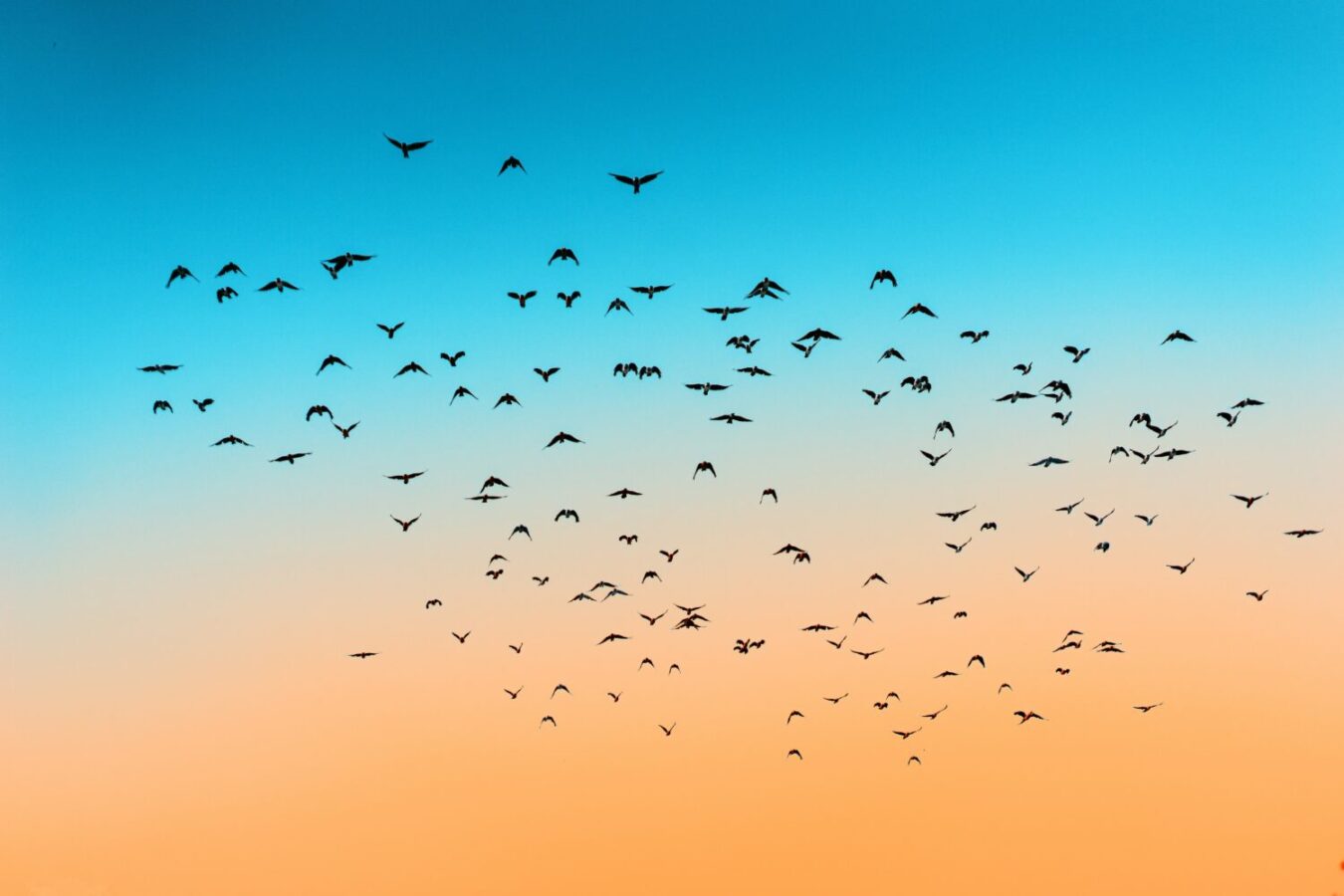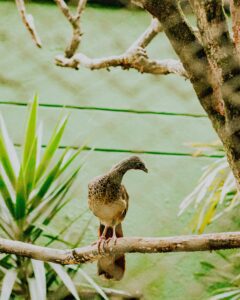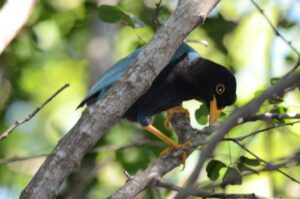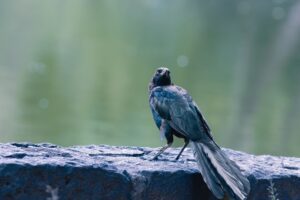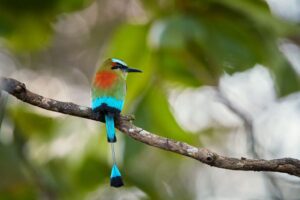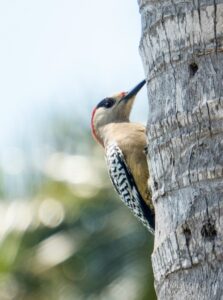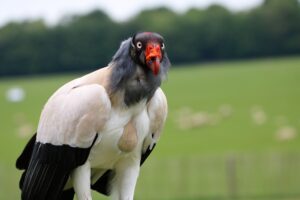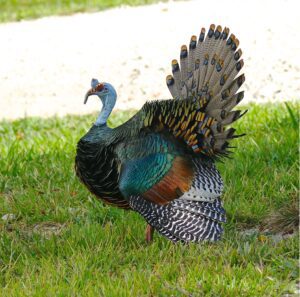DISCOVERING THE BIODIVERSITY OF THE MAYAN RIVIERA
PART 3: Birds Soaring Over Riviera Maya
Greetings World Explorers and Nature Lovers.
Welcome to the last but not least part of the ‘Discovering The Biodiversity of the Mayan Riviera Ultimate Guide.”
As we learn in Part 1 and Part 2, the beauty of the Riviera Maya is made up of different natural elements that perfectly complement each other to give life to the ecosystems that many endemic and transitory species call home.
Even though resorts and eco-parks have natural conservation programs for endemic and transitory species, such as Guacamayas and Flamingos, there are thousands more to discover and admire in their natural habitat.
A wonderful way to go bird watching would be to take any of the available tours around the Riviera Maya area or take The Cenote Route, where you will be surrounded by thousands of unique species like bats, that look for the only source of freshwater for the northern portion of the Peninsula, magnets for all forms of life, particularly birds.
After quite some years living in Playa del Carmen, I have found birdwatching a very interesting and peaceful way to immerse in the beauty of the diversity of the region. Today I want to share with you some of my favorite Bird species which I’m lucky enough to see and hear every day.
Chachalaca
Mayan Name: Baach
Scientific name: Ortalis Vetula.
Found in coastal areas from Texas to southern Mexico, Chachalacas are one of the most charismatic species of the Rivera Maya, and due to their high range of adaptation, they can live within the vegetation of urban areas as well as in the top of the trees of the Mayan jungle. While Chachalacas are birds that usually disappear into trees, they can easily be recognized by their characteristic singing which sounds as if several of them were arguing. In the Mayan culture, their sound was translated as an announcement that the rains were near, although an ancient Mayan legend narrates that the song of the Chachalacas served to scare away K’aak’as ba’al, “the bad thing” that came at night to take humans away.
Fun-Bird-Fact, the singing of Chachalacas sounds very similar to the translation of “The Sun is up” in the Yucatecan Mayan language.
Their chickenlike bodies and large necks are covered with feathers of brown, grayish, and black tones, with a long beak which helps them have easy access to their favorite food such as plants, berries, seeds, leaves, buds, and flowers, as well as some insects and snails. However, they can eat birdseed, popcorn, bread, and even junk food.
source: Camilo Ospina
Yucatan Jay (Chara Yucateca)
Mayan Name: Ch´eel
Scientific name: Cyanocorax Yucatanicus.
The Yucatan Jay is one of many endemic species of the Yucatan Peninsula, another reason to travel to the Riviera Maya is just to observe and photograph them, although it is not an endangered species just yet, it currently faces every day challenges due to habitat loss.
The Chara Yucateca comes from the family of crows, magpies, and green jay. At birth, this bird is distinguished by the peculiarity of having a lovely fluffy white plumage, with a bright yellow color on the beak and the ring around the eyes. As this birdie grows older, the plumage of its body fully becomes jet black matching perfectly with a beautiful and characteristic bright blue tone on its wings. Just like their close relatives they also produce a scandalous sound that works to communicate with each other, as well as a defense mechanism in case of intruders.
The main Yucatan Jay habitat is the Mayan Jungle but can also be found flying around mangroves, crops, and nearby beach villages where they take advantage of the plant and animal material depending on the season, mainly basing their diet on insects, lizards, nectar, a wide variety of fruits and seeds and one or many snacks they find around the neighborhood.
An interesting Fun-Bird-Fact of the Yucatecan Chara is that they have great mental flexibility related to high-level cognitive abilities equivalent to those observed in non-human primates, perhaps that’s why they are so friendly with tourists
source: commons.wikimedia.org/
Great-Tailed Grackle (Mexican Zanate)
Mayan Name: X’you
Scientific name: Quiscalus mexicanus
The Great-tailed Grackle, native to the coasts of the Gulf of Mexico was taken to Tenochtitlan by the eighth ruler, Tlatoani Ahuizotl, due to his love and fascination for birds, nowadays, its distribution covers the coastal areas from South and Central America to the United States. Grackles communally roost in the tropical lowland trees or the reeds of mangroves, during the day they leave their shelter in search of food, they can eat almost anything and are usually very clever to get their food, turning over objects to search for food underneath, including crustaceans, insects, and worms, they also hunt small rodents, small reptiles, and although they do not swim, they catch fish by flying close to the water surface.
Fun-Bird-Fact about the Mexican Zanate, they have been found dropping objects into the water to raise the level and bring food up to where they can reach it.
Although people usually call them crows, the Mexican Zanate is a different species. The males have a black, iridescent bright plumage with blue and purple hues, on the other hand, females are smaller, and have an opaque brown plumage.
Mexican Grackles have an unusually large repertoire of vocalizations, as territorial animals they defend their nests aggressively and when they perceive a possible aggressor they emit a noisy alarm song to scare them away. Their everyday characteristic sounds range from tinkling notes to a rusty gate hinge sound.
In Mayan culture, the Mexican Grackle represents the god Itzamná, the father of the gods and creator of the universe. Zanates were seen as a divine messenger from the gods and as a guide to human beings toward wisdom and spiritual enlightenment. In Aztec culture, the Mexican Grackle was regarded as a sacred animal and as a symbol of intelligence, as this bird is known for its ability to imitate the sounds of other animals and objects.
Photo by Roger Ce
Turquoise-Browed Motmot
Mayan Name: Toh
Scientific name: Supercilious eumomota
Toh Bird is distributed over the humid jungle of the Yucatan Peninsula reaching Costa Rica. Considered the bird of the Mayan land and is usually found near the territories that the Mayans considered sacred, such as cenotes, caves, caverns, wells, and Mayan archaeological sites. Living near places surrounded by water, they can find most of the elements from their basic diet such as a variety of insects captured on the fly, small vertebrates and reptiles, fruits, worms, and even bread, if they are flying near a beach town.
A special technique from the Pajaro Toh to get food is thanks to the pendulum movement of its naked tail that ends in the shape of a small feathered turquoise blue racket, that’s why Mayans named them Pajaro Toh, which is translated as Clock Bird. It has a thin and elegant appearance that shines with the Sunlight, its plumage is iridescent with tints of olive green, cinnamon, turquoise, and reddish ochre with a triangular spot on the chest surrounded by turquoise, with green feathers on its head.
Fun-Bird-fact, their characteristic vocalization “muut, muut” is unmistakable and was of great importance for the Mayans since listening to the sound of a Toh Bird was an indication that this area of the jungle was healthy and that nearby there was a cave and the opportunity to find water. The legend of Pajaro Toh is a story that the ancient Maya have repeated for generations, to teach young people the importance of maintaining humility and being in solidarity with those around us.
source: laceibaciudadmayakoba.com
Yucatan Woodpecker
Mayan Name: Che’huum, Ch’ejum
Scientific Name: Melanerpes pygmaeus
It is surprising to know that the Yucatan Peninsula has eleven species of woodpeckers, most of them have some red feathers at some part of their heads or in some other part of their bodies, even Woody the Woodpecker, but the Yucatecan Cheje is the most seen in Mayan lands. The Yucatan woodpecker’s natural habitats are forests, coastal scrub, and other semi-open habitats. As an important part of the ecosystem they keep insect pests under control, particularly beetles and their larvae that usually infect trees, likewise, they feed on fruits, seeds, and occasionally eggs of other birds and lizards.
These animals have many anatomical adaptations to carry out all kinds of daily activities, in the Mayan language its name means “wood rumble” which refers to the characteristic shape of building their shelter. They use their strong beak to drill holes in the trees and have large muscles in their necks protecting their brains, which also absorb the impacts when they hammer the wood. Its legs have 4 toes, two towards the front and two towards the back, its rigid tail feathers work as a support forming a kind of tripod to give stability while standing vertically on a tree. Once they have made the hole, a very long tongue comes into action that ends in a spear-shaped point, with which it catches insects. Adult Yucatan woodpecker is mainly light gray with black and white barred patterns on their back, wings, and tail. Adult males have a fluffy red cap going from the head to their back and females appear to be wearing a gray sun visor with cherry red hair sticking out of it, around the base of the bill bright yellow feathers make them easy to recognize from a distance. Fun-Bird-fact, if for some reason the woodpecker doesn’t like its nest, it starts another one without hesitation which will later be occupied by other birds or even reptiles.
According to the Mayan legend, the woodpecker was sent by the god Chaac to find the sacred corn seed that was given by Itzamná, that day, a stone hit the woodpecker on the head, staining its head red for eternity.
Photo by Allan Wadsworth
Vultures
Mayan Name: Ch’com
Scientific Name: Coragyps atratu, Sarcoramphus papa
These birds are frequent flyers from southeastern South America to the southern US and the state of Yucatan is home to four species of vultures including the Common Vulture and the King Vulture. They can be found in rubbish dumps, on top of transmission towers on the side of roads, or over endemic trees such as chicozapote. Exclusively fed of carrion, and a variety of decomposed organic matter, fulfilling the important task of keeping the environment clean, which prevents the proliferation of parasites and potentially dangerous diseases for the ecosystem and the human being.
Fun-Bird-Fact, when they are newborns, vultures’ plumage is completely white, eventually their color becomes darker until they acquire different shades depending on their species. Its head remains bare of feathers to avoid infections from the bacteria present in its food and its deep and powerful eyes work together with its sense of smell to locate prey from heights and great distances, it lacks a particular song but can hiss and growl.
The ancient Maya viewed vultures as a symbol of cleanliness and renewal, it was an intermediary that crossed the skies communicating humanity with the gods. Legend has it, that on a day of celebration, the then colorful vultures devoured a feast prepared to honor Hunab Ku without keeping even a crumb to share, the enraged god Uxmal burned and stained their feathers black, forcing them to eat dead animals. and spoiled food for the rest of his days.
source: Pixabay
Ocellated Turkey
Mayan Name: Kutz
Scientific Name: Meleagris ocellata
We find Ocellated Turkey distributed only in a region of about 130,000 square kilometers in the Yucatan peninsula, including the states of Quintana Roo, Campeche, Tabasco, and the northeast of Chiapas. As written in the scripts of the Maya Culture book, the Popol Vuh, ecologically and culturally represents a very important value, but is currently a seriously endangered species.
They regularly sleep in trees that keep them away from nocturnal predators like jaguars, during the day they can be found in lands that were used for agricultural use and in wide pastures gathering their food. Although water consumption can be very limited, they like to feed on fruits and roots of cassava, zebrina, and palm nuts and usually hunt for grasshoppers, beetles, and arachnids.
Fun-Bird-Fact, they complement their diet with gravel and sandstone, necessary to assist in the breakdown of organic matter for digestion. It is a large bird, but at the same time lightweight, measuring up to one meter. The characteristic feathers on its body are very colorful, between iridescent greens and shades of bronze. The caudal feathers are grayish blue, and at the end, it has some spots that look like eyes, the shiny edge is a beautiful golden color. Although they do not have feathers on the neck and head, they boast a very vibrant blue hue, tinged with small red warts, and an eye ring of the same hue. The males also have a blue crown, with warty markings in citrus colors such as orange. During the reproductive season, these warts become inflamed and more conspicuous and their lower extremities are red.
The beauty of the turkey caught the attention of the Mayans so much that they gave it supernatural powers, it is found in some Mayan codices, in the Mayan archeology and iconography, especially since when it extends its tail, the plumage is shaped like eyes, which is why it is considered sacred and nocturnal. For the Mayans, the turkey is a messenger of the gods who possesses dreamlike abilities.
source: commons.wikimedia.org/
Honestly, it was very difficult to choose each of the species that we talked about in our 3-part biodiversity guide, especially this last one, every time I added a different bird species to the list, a different one would arrive on my terrace as if they knew what I was writing about them and they wanted to make it to the final cut.
So now you have a Complete Guide of Animals You Can Find at the Riviera Maya that you can use on your next adventure everywhere ate the Yucatan Penisula.
I hope with it you can connect with the nature that surrounds this world and all the life forms that shares this planet with us.
Catch you on the fly!
– Abbey

